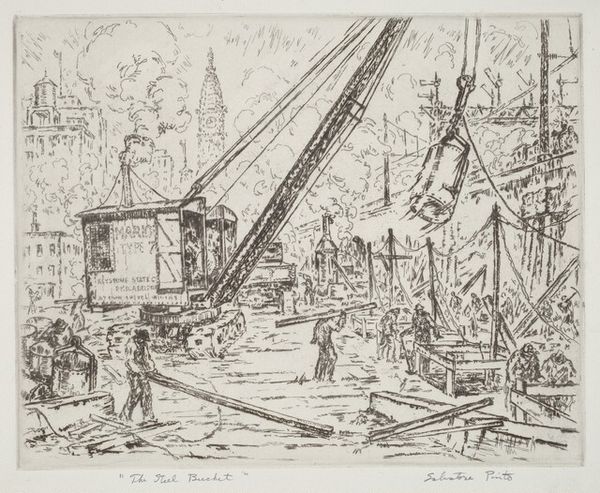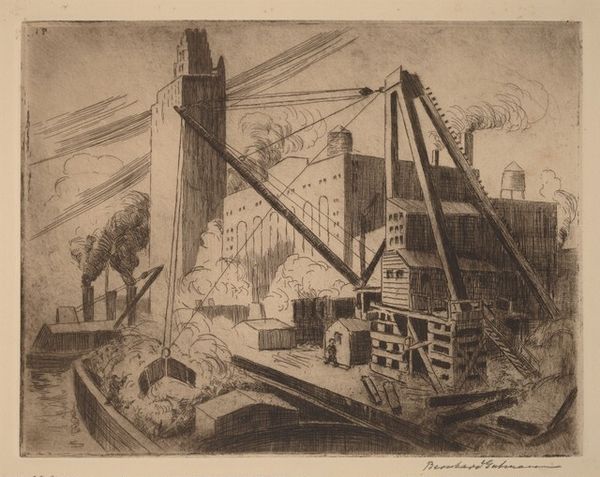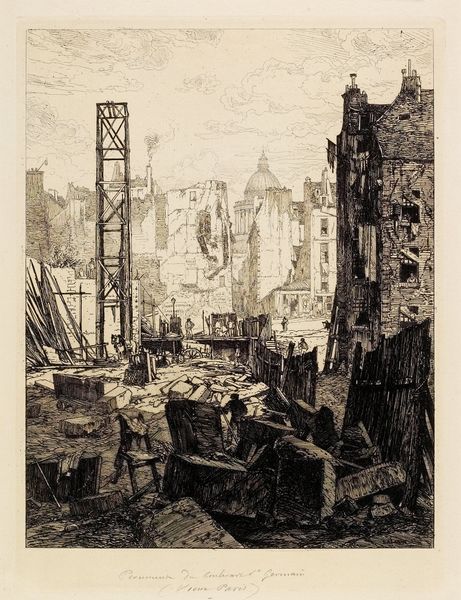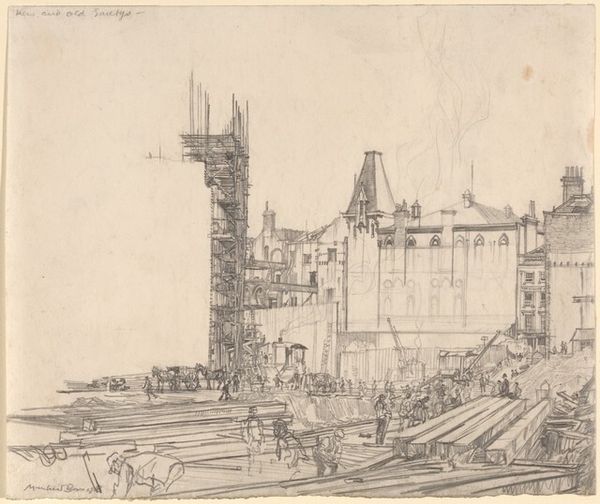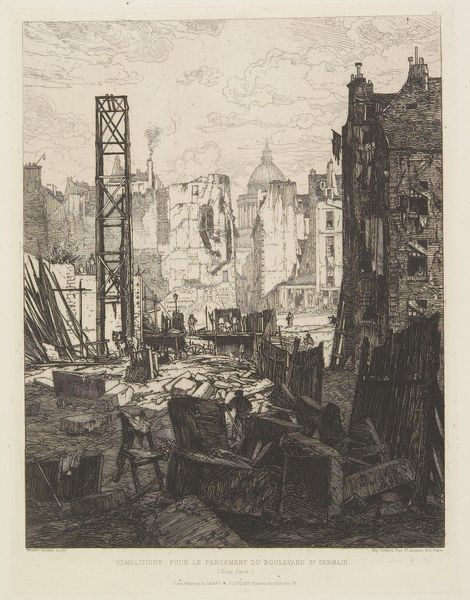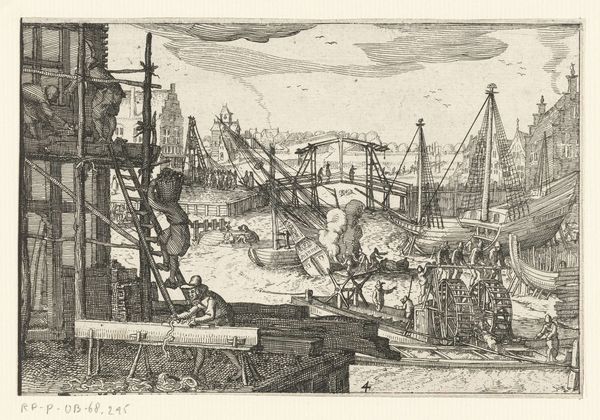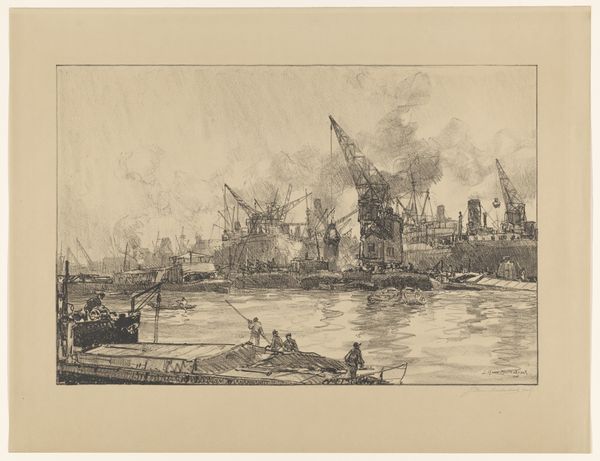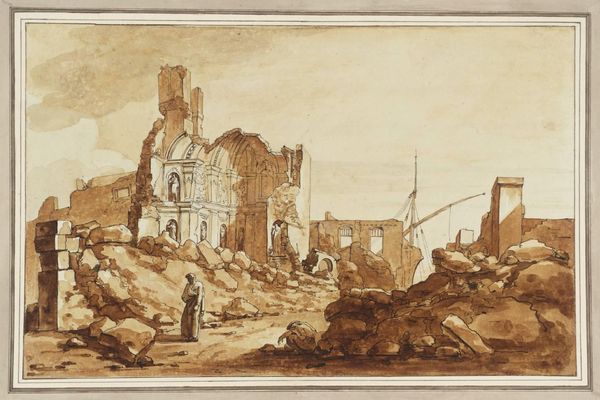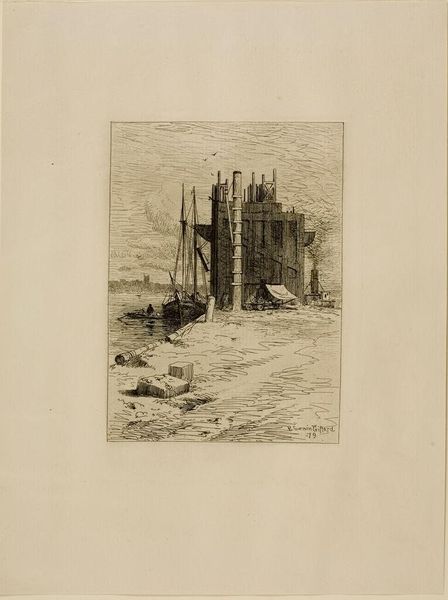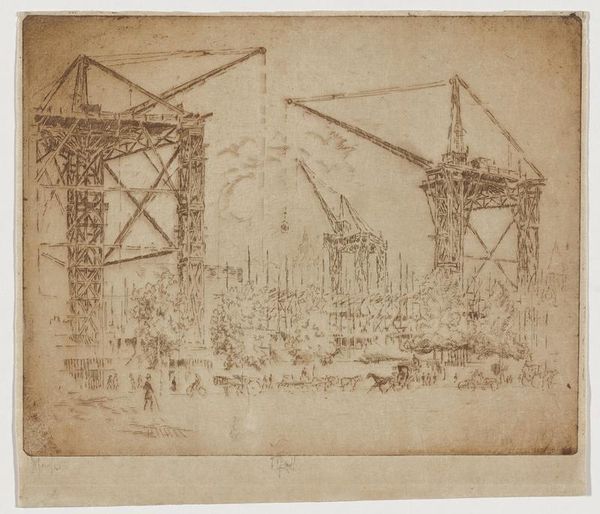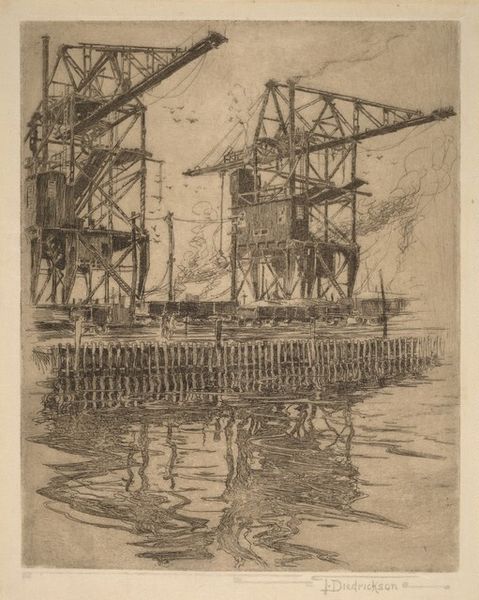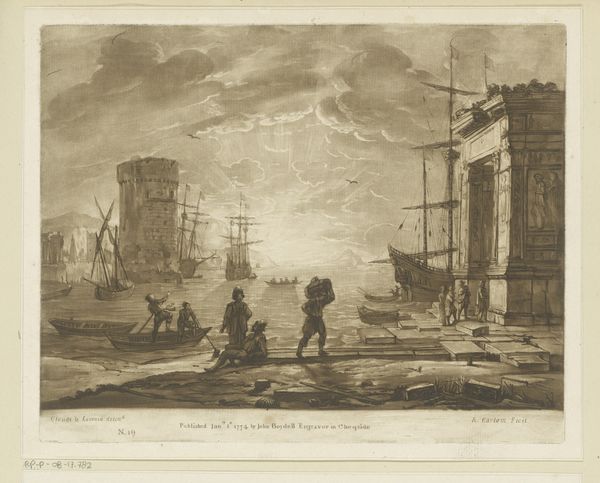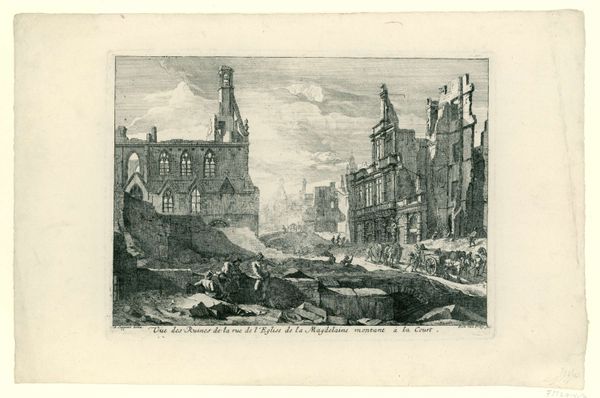
print, etching
# print
#
etching
#
landscape
#
etching
#
realism
Dimensions: 9 7/16 x 12 1/4 in. (23.97 x 31.12 cm) (plate)10 15/16 x 14 15/16 in. (27.78 x 37.94 cm) (sheet)
Copyright: No Copyright - United States
Curator: "Coal at Cardiff" is an etching crafted by Joseph Pennell in 1910. It now resides here at the Minneapolis Institute of Art. My immediate sense is one of oppressive industry. What's your initial take? Editor: Well, it's a surprisingly delicate image, considering its subject. The skeletal cranes, repeated like motifs across the scene, remind me of towering, watchful figures in a desolate industrial landscape. There is something elegiac about the scene as a whole, maybe suggesting decay, not at all dynamic and energetic. Curator: Right, and consider the process of etching, layering the marks onto the metal plate; there's a laboriousness echoed in the manual effort depicted on the docks themselves, wouldn't you agree? The sheer physical toil inherent in loading coal would have been quite intense for the workers. Editor: I'm struck by how those skeletal crane figures visually dominate. Their forms repeat, establishing a network. Are these icons of progress or warning signals for future decline? The recurring motifs—these gaunt metal structures—lend a narrative weight, maybe speaking of broader forces shaping our human endeavors. Curator: Good point. The print's existence itself, as a multiple, hints at how these images become part of broader visual culture shaping our consumption habits and acceptance of industrial landscapes as they developed throughout the 20th century. We could think of it as an example of proto-industrial sublime... the human compulsion for control of landscape and materials. Editor: But are these structures simply steel? Think beyond the tangible. They embody striving. They speak of mankind’s reach, touching skies. The image has cultural memory embedded within it—echoes of ambition, labor's symbolism, dreams materialized through construction and industrial energy. What meaning did such industrial monuments hold for that society at that moment in its own history? Curator: A useful reflection that is so visible within these images of what at that point may have seemed like endless resources, exploited for an unending growth. Considering today’s climate concerns, it allows one to reflect on the processes that started more than 100 years ago. Editor: The emotional residue of this etching resonates profoundly—an intriguing encounter that made me consider meanings encoded across time through our symbols, their persistence inside human imagination. Curator: Indeed. An opportunity to recognize this convergence of production, social implications and personal symbolic understanding... thanks for sharing this view!
Comments
No comments
Be the first to comment and join the conversation on the ultimate creative platform.
